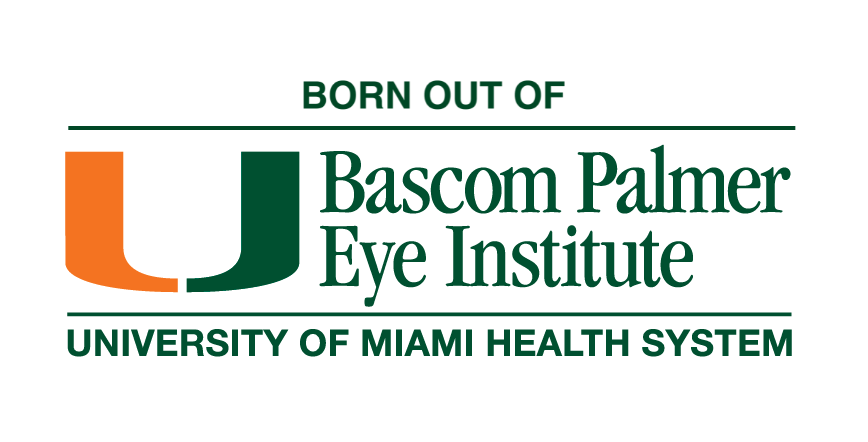Shine a Spotlight on AMD: 5 Reasons to Screen Your Patients
by Milan Lockhart, OD

As our patient’s age, their eyes are increasingly susceptible to age-related macular degeneration (AMD), a disease that impacts nearly 11 million people in the US and 170 million worldwide.1 AMD is the leading cause of vision loss in older adults and is typically caused by the aging of the macula.
The unfortunate reality of AMD is that up to 30% of eyes diagnosed with the disease could have been treated if diagnosed early.2 One study showed that 78% of AMD patients fail to seek treatment until their visual acuity is irreversibly impaired. 3
Dr. Milan Lockhart, of Spectrum Eye Care, shares five risk factors that could indicate the presence of this condition.
1. Your Patient’s Age
As the name suggests, aging is one of the main risk factors for development of AMD. In fact, AMD impacts 1 in 8 adults over the age of 60. As your patient ages, it becomes increasingly vital to test their eyes for signs of AMD.4
2. Family History
If your patient’s family member has been diagnosed with AMD, their chances of having the disease increase sharply. Studies have shown that if your patient has a close relative with AMD such as a sibling or parent, they are 15-20% more likely to develop the disease.5
3. Overweight? Smoker?
If your patient is overweight or is a smoker, they possess key risk factors that make them especially vulnerable to the disease. One study found that patients with a body mass index (BMI) >30, and higher waist circumference, saw a 2-fold increased risk for disease progression. Patients with a healthier lifestyle, which included more physical activity, saw a decreased risk.6 Smoking’s detrimental effect is even stronger, with reported two to three-fold risk of AMD development.7
4. Your Patient’s Eyes Do Not Adjust to the Dark
Dark adaptation is a measure of the eye’s ability to adjust when moving from a bright environment to a darker/dimly lit environment. If adjusting to the dark takes longer for your patient than normal, it could be an indicator of AMD.
5. Your Patient Reports Difficulty Driving at Night
If your patient reports difficulty driving at night, has trouble seeing pedestrians walking along underlit streets, this could indicate the presence of AMD.
Most individuals suffering from AMD do not know they have it until the disease has progressed significantly. Early detection and intervention are key to slowing vision loss. In my practice, patients over the age of 60 who are Caucasian, smoke, are obese, and/or are over the age of 50 with a family history of the disease are screened for AMD. Heru’s AMD portfolio leverages the power of dark adaption and contrast sensitivity testing to elevate the standard of care, while utilizing fewer minutes of chair time than ever possible with legacy instrumentation. Heru’s suite of macular degeneration tests will change the way we screen for and manage AMD.
Dark adaptation (CPT 92284) plays a critical role in the detection of subclinical AMD. Studies have shown that dark adaptation may aid physicians in the detection of AMD-related changes up to three years before drusen are visible, allowing for earlier intervention and management of the disease.8 Heru’s rapid dark adaptation exam can be completed in as little as 4.5 minutes and the more comprehensive rapid exam can be performed in 20 minutes. Dark adaptation is billable to insurance with a national reimbursement average of $58.83 and is supported by multiple ICD-10 codes.
To learn more about Heru’s dark adaptation exam the button below.
References:
1. Pennington KL, DeAngelis MM. Epidemiology of age-related macular degeneration (AMD): associations with cardiovascular disease phenotypes and lipid factors. Eye Vis (Lond). 2016 Dec 22;3:34. doi: 10.1186/s40662-016-0063-5. PMID: 28032115; PMCID: PMC5178091.
2. Neely DC, Bray KJ, Huisingh CE, Clark ME, McGwin G Jr, Owsley C. Prevalence of Undiagnosed Age-Related Macular Degeneration in Primary Eye Care. JAMA Ophthalmol. 2017 Jun 1;135(6):570-575. doi: 10.1001/jamaophthalmol.2017.0830. PMID: 28448669; PMCID: PMC5847085.
3. Cervantes-Castañeda RA, Banin E, Hemo I, Shpigel M, Averbukh E, Chowers I. Lack of benefit of early awareness to age-related macular degeneration. Eye (Lond). 2008 Jun;22(6):777-81. doi: 10.1038/sj.eye.6702691. Epub 2007 Jan 12. PMID: 17220824.
4. Bourne RRA, Jonas JB, Bron AM, Cicinelli MV, Das A, Flaxman SR, Friedman DS, Keeffe JE, Kempen JH, Leasher J, Limburg H, Naidoo K, Pesudovs K, Peto T, Saadine J, Silvester AJ, Tahhan N, Taylor HR, Varma R, Wong TY, Resnikoff S; Vision Loss Expert Group of the Global Burden of Disease Study. Prevalence and causes of vision loss in high-income countries and in Eastern and Central Europe in 2015: magnitude,
temporal trends and projections. Br J Ophthalmol. 2018 May;102(5):575-585. doi: 10.1136/bjophthalmol-2017-311258. Epub 2018 Mar 15. PMID: 29545417; PMCID: PMC5909755.
5. Age-related macular degeneration: MedlinePlus Genetics
6. Seddon JM, Cote J, Davis N, Rosner B. Progression of age-related macular degeneration: association with body mass index, waist circumference, and waist-hip ratio. Arch Ophthalmol. 2003a;121:785–792
7. Evans, J. R., Fletcher, A. E., & Wormald, R. P. (2005). 28,000 Cases of age related macular degeneration causing visual loss in people aged 75 years and above in the United Kingdom may be attributable to smoking. The British journal of ophthalmology, 89(5), 550–553. https://doi.org/10.1136/bjo.2004.049726
8. Owsley, C., Mc Gwin Jr., G., Clark, M. E., Jackson, G.R., Callahan, M.A., Lanning, B.K., Witherspoon, C.D., Curcio, C.A. Delayed Rod-Mediated Dark Adaptation is a Functional Biomarker for Incident Early Age-Related Macular Degeneration. AAO Journal, Volume 123; Issue 2, P344-351. Published 2015 Oct. https://www.aaojournal.org/article/S0161-6420(15)01122-7/fulltext
